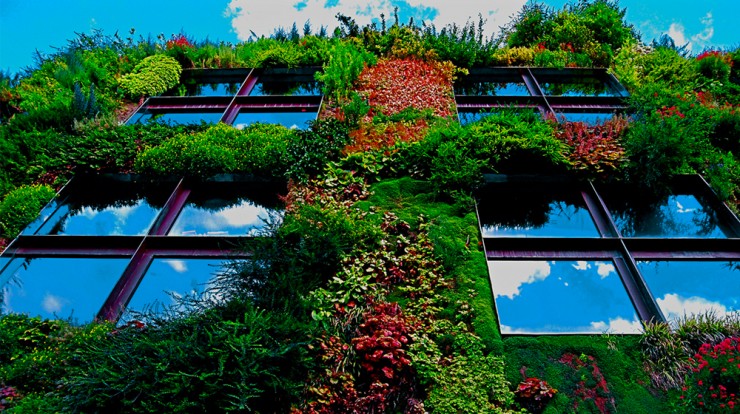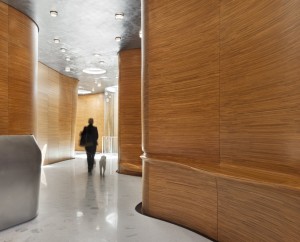

Project Profiles
Biophilia at Terrapin
Catie Ryan
Share
Learn more about our biophilic design work and services by emailing us at [email protected] and reading our reports, 14 Patterns of Biophilic Design and The Economics of Biophilia. Follow the conversation on twitter: @TerrapinBG | #14Patterns.

One Jackson Square, NYC. Copyright Michael Moran Studio.
Biophilia, a concept first described by biologist E.O. Wilson, is humanity’s innate response to nature and connection to natural systems. Biophilic design is about recognizing humanity’s place in nature and using the built environment to maintain, restore, and enhance our physiological and psychological connections to the natural world. We care about biophilia in building design for two primary reasons. First, biophilic elements have demonstrably real, measurable benefits for human performance metrics such as productivity, emotional well-being, stress reduction, learning, and healing. Second, biophilic features foster an appreciation of nature, which can lead to greater protection of natural areas, species conservation, and pollution prevention.
Terrapin was asked to update a research database for Delos Living, a real estate developer focusing on community design that supports human health and well being. This database expands on work on biophilia begun at Rocky Mountain Institute in 1995. While literature on biophilia spans a number of disciplines, scientific peer-reviewed documentation triangulating its relationship to health and well being in the built environment is increasingly prevalent. Terrapin identified key scientific studies that connect common facets of biophilia (nature in the space, natural analogs, and nature of the space) with important health domains, including stress response, productivity, obesity, and cancer. At the core of the research is an interest in human psychological and physiological response to different environments. The results of our research were categorized to identify relationships between health domains and the built environment that will be used to inform the design goals.
Terrapin has since been engaged with several clients, including the American Society of Interior Designers, Clif Bar, Google and Interface, to strategize and enhance the biophilic experience of their projects.
*Header/feature image © Vincent Brassinne/Flickr.
Filed under:
Catie Ryan
Catie is the Director of Projects at Terrapin and a leader in biophilic design movement. With a background in urban green infrastructure, Catie's interest lies in systems thinking to address human health and sustainability challenges at each scale of the built environment.
Topics
- Occupant Comfort
- Materials Science
- Speaking
- LEED
- Terrapin Team
- Phoebe
- Community Development
- Greenbuild
- Technology
- Biophilic Design Interactive
- Catie Ryan
- Spanish
- Hebrew
- French
- Portuguese
- Publications
- Carbon Neutrality
- Environmental Values
- Conference
- Psychoacoustics
- Education
- Workshop
- Mass Timber
- Transit
- Carbon Strategy
- connection with natural materials
- interior design
- inspirational hero
- biophilia
- economics of biophilia
- Sustainability
- Systems Integration
- Biophilic Design
- Commercial
- Net Zero
- Resorts & Hospitality
- Energy Utilization
- Water Management
- Corporations and Institutions
- Institutional
- Ecosystem Science
- Green Guidelines
- Profitability
- Climate Resiliency
- Health & Wellbeing
- Indoor Environmental Quality
- Building Performance
- Bioinspired Innovation
- Biodiversity
- Residential
- Master Planning
- Architects and Designers
- Developers and Building Owners
- Governments and NGOs
- Urban Design
- Product Development
- Original Research
- Manufacturing
- Industrial Ecology
- Resource Management
- Sustainability Plans
- Health Care


